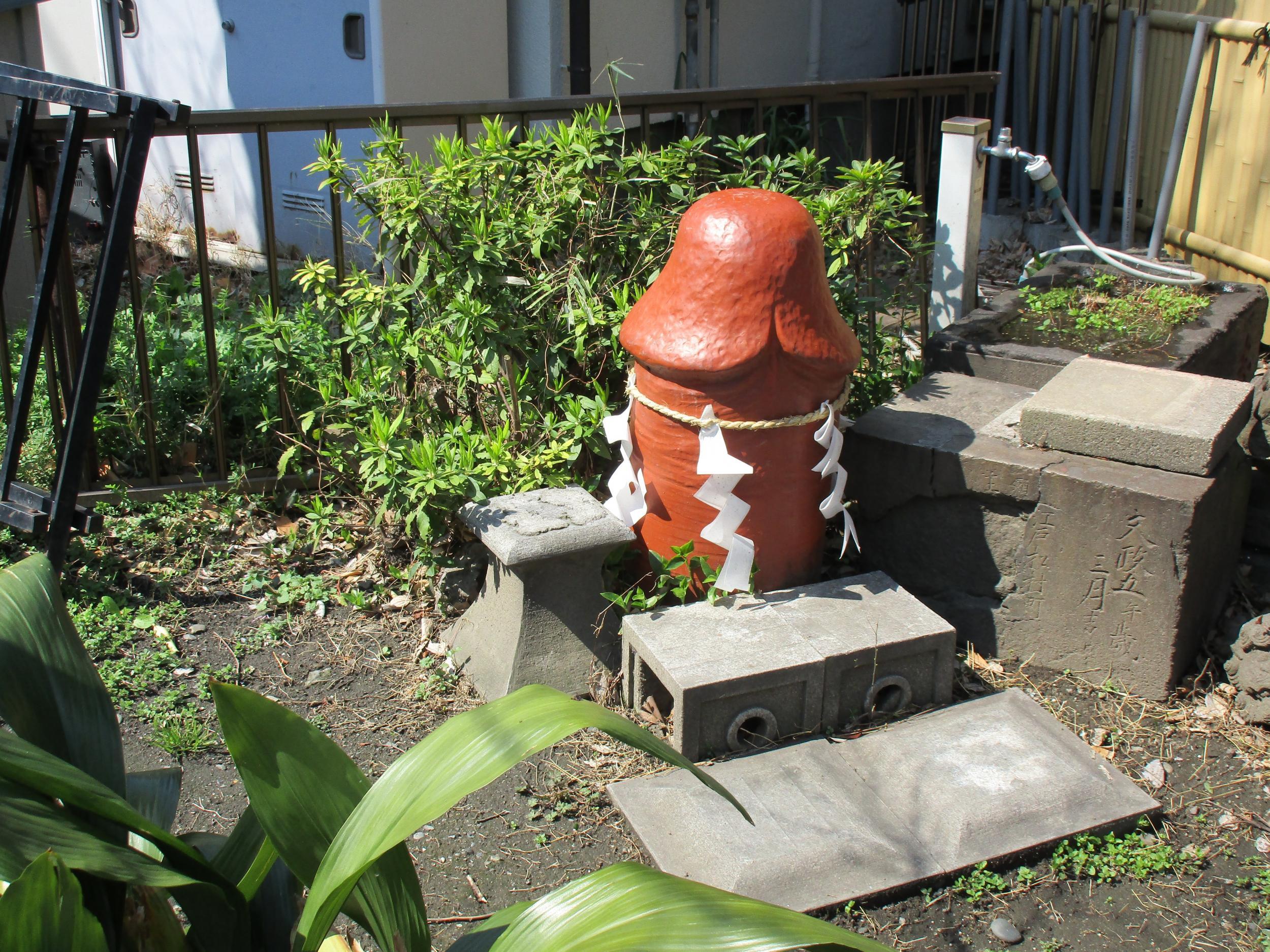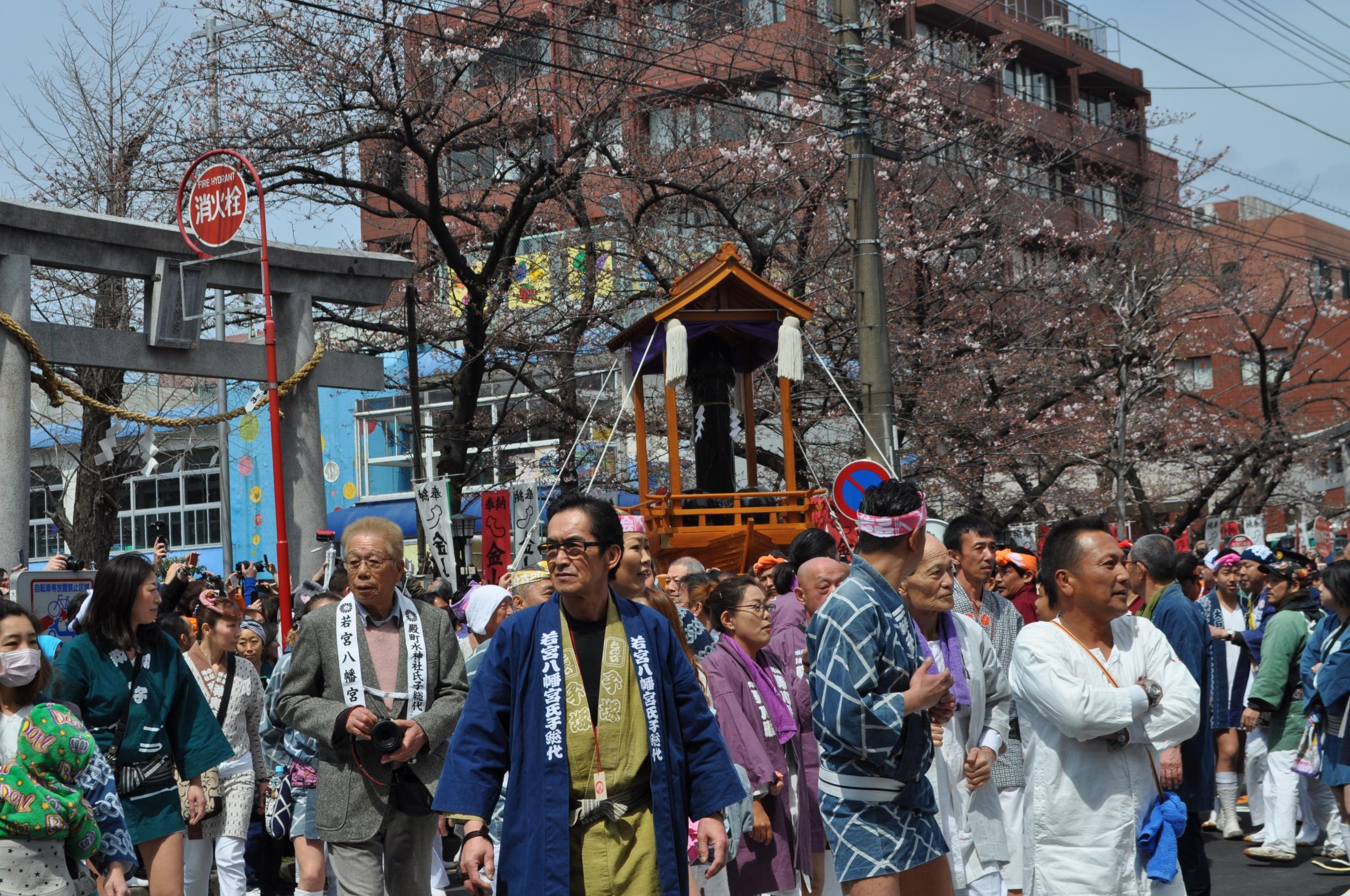The Independent's journalism is supported by our readers. When you purchase through links on our site, we may earn commission.
Inside Japan's world-famous 'penis festival'
Every April, thousands descend on Kawasaki to participate in an ancient Shinto fertility ritual that’s now a sex-positive celebration. Selena Hoy joins the crowd
If any country has a reputation for modesty and manners, it’s Japan. The Japanese are polite, never late and constantly bowing, goes the usual narrative – and there’s certainly truth in that. But the reality is a little more complicated – and that complexity is on full view at one of the country’s most outlandish religious festivals, the Kanamara Matsuri, or “Festival of the Steel Phallus”, held annually in Kawasaki, just south of Tokyo.
It’s the first Sunday in April, and I’m in Kawasaki’s Daishi neighbourhood, surrounded by penises of all colours and sizes. Normally the streets here are sleepy – just three days ago, only a few lonely pedestrians were walking the alleys – but today there’s a scrum of people shouting, laughing and chanting, pushing and shoving as they jockey for position.
They’re all trying to get a glimpse of the massive penis mikoshi, or portable shrines, being paraded through the town. Each mikoshi is carried by dozens of locals outfitted in happi coats and sweatbands, while some of the men are in fundoshi, loincloth-style underwear.
The Kanamara Matsuri is often presented to outsiders as yet another face of “quirky Japan”, but in fact, it’s a serious religious affair, linked to Japan’s nature-worshipping Shinto religion.
It’s organised by the priests of Kanayama Jinja, a ‘sub-shrine’ of the larger Wakamiya Hachimangu that, the rest of the year, is populated almost exclusively by locals. For centuries, Kanayama has been a place where couples pray for fertility and marital harmony; during the Edo era, from the 17th to 19th centuries, sex workers would come and pray to be rid of the STIs that they picked up in the course of the job. There was even a festival revolving around fertility and sexual health during those times – but the tradition was lost in the late 1800s. In the 1970s, then-chief priest Hirohiko Nakamura decided to resurrect it.
Early incarnations of the ‘new’ Kanamara Matsuri were held at night and saw only about a dozen attendees. But since then, the festival has morphed into what it is today: a joyful and blatant celebration of the penis in this usually more circumspect country.
The Japanese aren’t exactly known for broadcasting their sex lives and until recently, the Kanamara Matsuri mostly attracted a smattering of overseas visitors. But five years ago everything changed when it was name-checked by Matsuko Deluxe, a Japanese TV personality known for his cross-dressing and pro-sexuality views. The festival quickly gained domestic followers – today it attracts around 50,000 visitors.
The parade consists of three mikoshi, each containing an enormous disembodied phallus. The first – ramrod straight and made of shiny black metal – is carried by a troupe of whistling and chanting shrine-bearers, careering from side to side down the street as festivalgoers jump out of the way. The second is an old wooden model, ancient and gnarled.

The third is carried by a joso group: members of a cross-dressing club called Elizabeth Kaikan whose members are decked out in bright makeup and colourful wigs as they jiggle the mikoshi in the air, pouting and preening for the cameras.
But although some see the festival as a joke, Kimiko Nakamura, former chief priestess at the shrine (and wife of Hirohiko, who rebooted the festival), stresses that it’s a legitimate event – politically as well as from a religious perspective.
“Officials who handle human rights from City Hall have come to the festival and handed out pamphlets, promoting this festival as a LGBT-positive, non-discriminatory event,” she tells me. “This event has deep, wide roots in that kind of thinking, and we don’t want anybody to take it another way.
“We consider that there should be no discrimination against anybody, including LGBT people. Anybody should be able to come to this festival and enjoy it.” Fertility prayers aren’t unusual in Shinto, of course – and neither is phallic imagery.
Back in the procession, groups of people wander by sucking on penis-shaped lollipops coloured green, blue, purple and pink. The line at the sweet stand is at least 30 deep. Even local restaurants are doing their own take on phallic-shaped fare.

And everyone’s loving it. I see grannies enjoying themselves. I meet one woman who tells me she works at the nursery school next to the shrine and has been a festival stalwart for 30 years. And lots of people have brought small children, too. One little boy perches on his dad’s shoulders and points to the big pink phallus mikoshi. “Wow, a willy!” he says. “Yeah,” his dad responds. “It’s a big willy.”
Join our commenting forum
Join thought-provoking conversations, follow other Independent readers and see their replies
Comments